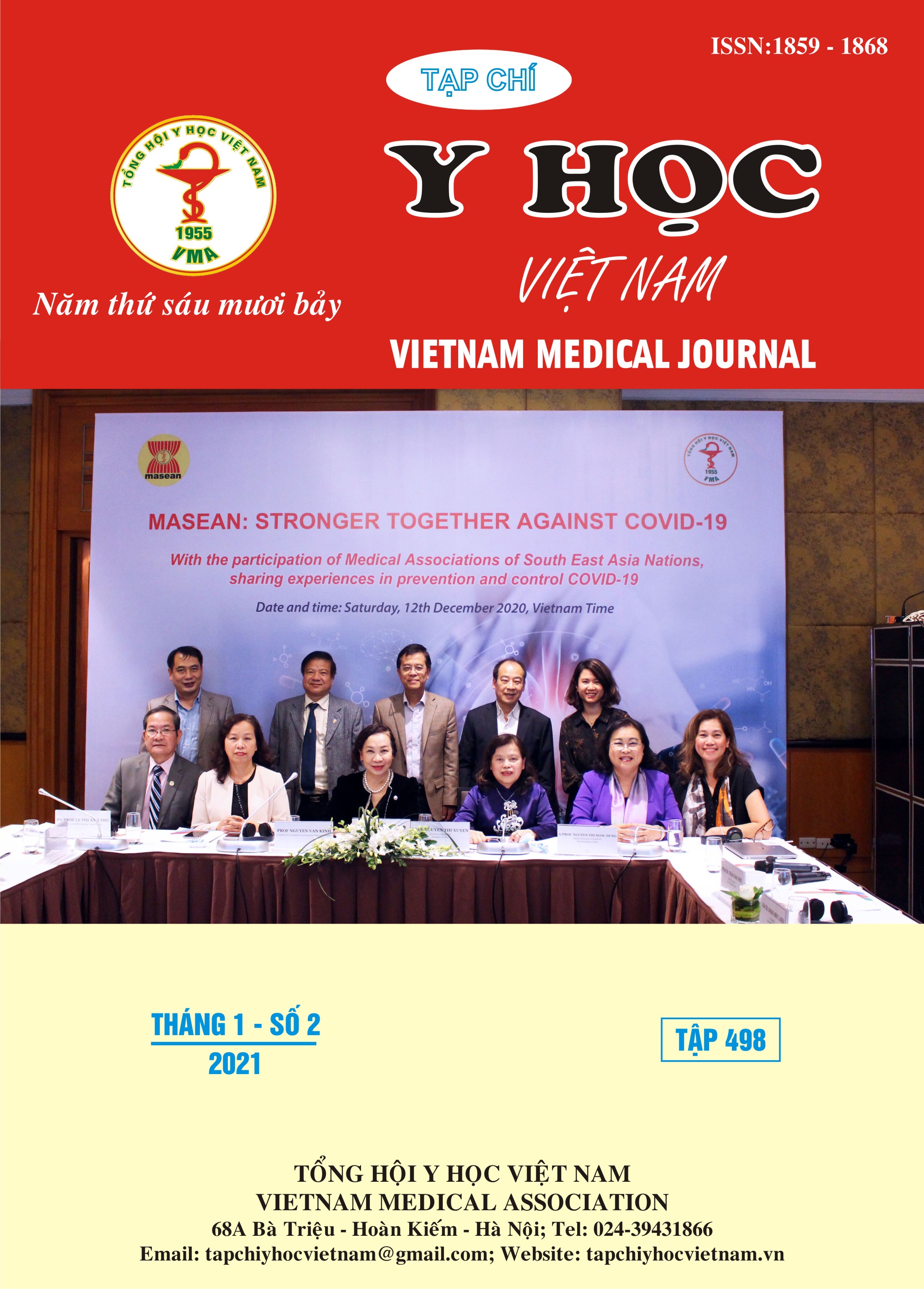OUTCOMES OF PERIPHERAL VASCULAR INTERVENTIONS IN PATIENTS WITH AORTOILIAC AND LOWER EXTREMITY ARTERY DISEASE
Main Article Content
Abstract
Backgrounnd: In recent years there has been a shift in the treatment occlusion of aortoiliac and extremity artery from open surgical treatment to endovascular interventions. Endovascular treatment for TASC (Trans-Atlantic Inter-Socity Consensus). Although, a surgical approach continues to be recommende for patiend with low operative risk for complex of TASC class D, but recent studies have revealed endovascular interventions success compared with open reconstruction. Objective: To determine the efficacy, short- term results of percutaneous transluminal angioplasty (PTA) in patients with symptomatic lower extremity artery disease. Methods: From March to December 2020, the cross sectional, descriptive study was carried out on 38 patients with lower limb artery disease, treated by PTA in Vascular Surgery Department of ChoRay Hospital and Cardiovascular- Thoracic Department of Thong Nhat hospital. All patients were evaluated by clinical symptoms, ankle- brachial index and lesion characteristic before and after the intervention to determine the initial success. Results: Majority of lesions belong to TASC II C and D (79%). The artery treated with angioplasty were aortoiliac (68,4%), femeropopliteal (44,7%) and below-knee artery (42,1%). Balloon angioplasty and stent placement were in 24 patients (63%) and balloon angioplasty in 14 patients (27%). The ankle- brachial index before and after the intervention respectively 0,35 and 0.70 (p<0,001). Overall, the technical successful rate was 97%. The complications included access site hematoma (10%), limb amputation (5,4%), bleeding (1,7%). Conclusion: PTA is a feasible and effective procedure for treatment of aortoiliac and lower limb artery disease. However, we need to increase the sample size and more study of long term patency of PTA should be conducted.
Article Details
Keywords
peripheral artery disease, lower extremity artery disease, percutaneous transluminal angioplasty
References
2. Dake MD, Ansel GM, Jaff MR, Ohki T, Saxon RR, Smouse HB, Machan LS, Snyder SA, O'Leary EE, Ragheb AO, Zeller T; Zilver PTX Investigators. Durable Clinical Effectiveness With Paclitaxel-Eluting Stents in the Femoropopliteal Artery: 5-Year Results of the Zilver PTX Randomized Trial. Circulation. 2016 Apr 12;133(15):1472-83.
3. Đinh Huỳnh Linh, Phạm Mạnh Hùng và cộng sự, Đánh giá kết quả sớm can thiệp nội mạch điều trị bệnh động mạch chi dưới mạn tính ở Viện Tim mạch Việt Nam. Tạp chí Tim Mạch học Việt Nam, 75+76 (2016), 123-130.
4. Johnston KW. Femoral and popliteal arteries: reanalysis of results of balloon angioplasty. Radiology 1992;183:767-771.
5. Klinkert P, Schepers A, Burger DH, et al. Vein versus polytetrafluoroethylene in above-knee femoropopliteal bypass grafting: five-year results of a randomized controlled trial.J Vasc Surg. 2003;37:149 –155
6. Kudo T, Chandra FA, Ahn SS. The effectiveness of percutaneous transluminal angioplasty for the treatment of critical limb ischemia: a 10-year experience.J Vasc Surg. 2005;41:423– 435; discussion 435
7. L’Italien GJ, Cambria RP, Cutler BS, et al. Comparative early and late cardiac morbidity among patients requiring different vascular surgery procedures.J Vasc Surg. 1995;21:935–944.
8. Marie D. Gerhard-Herman, et al, 2016 AHA/ACC Guideline on the Management of Patients With Lower Extremity Peripheral Artery Disease. J Am Coll Cardiol. 2017 Mar, 69 (11) e71-e126.
9. Martin Schillinger, et al. Balloon Angioplasty versus Implantation of Nitinol Stents in the Superficial Femoral Artery. N Engl J Med 2006; 354:1879-1888


